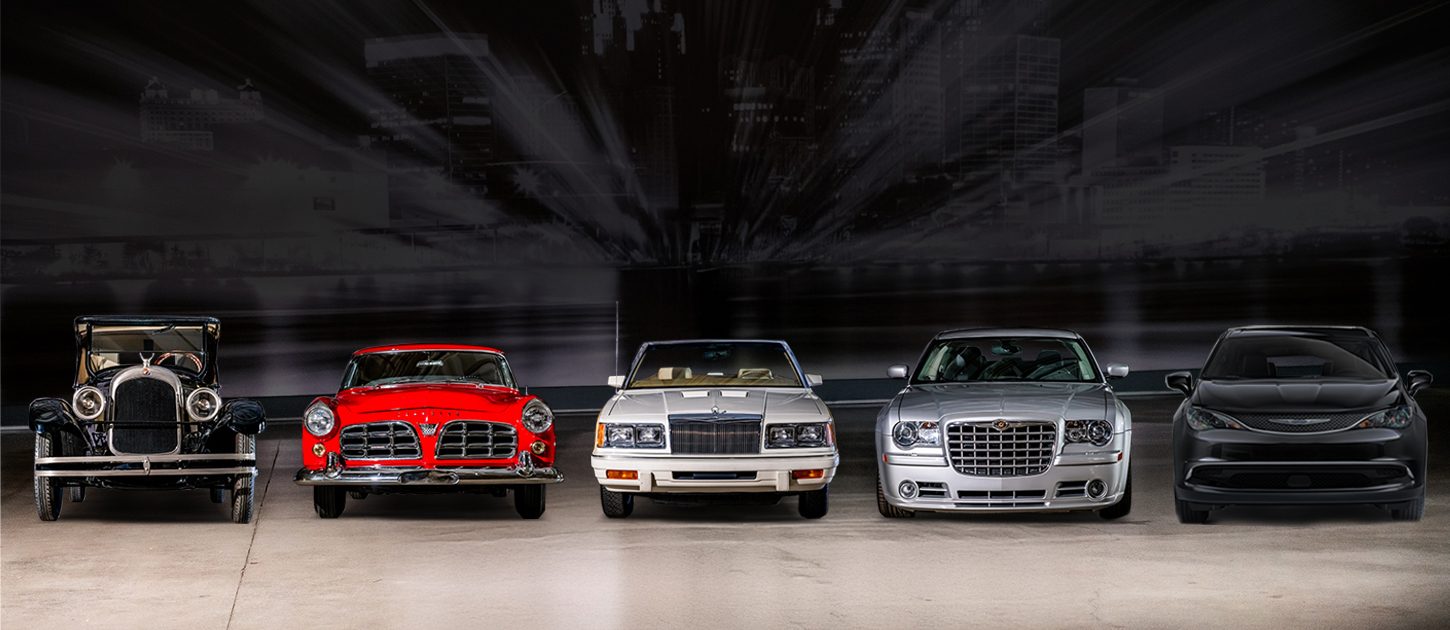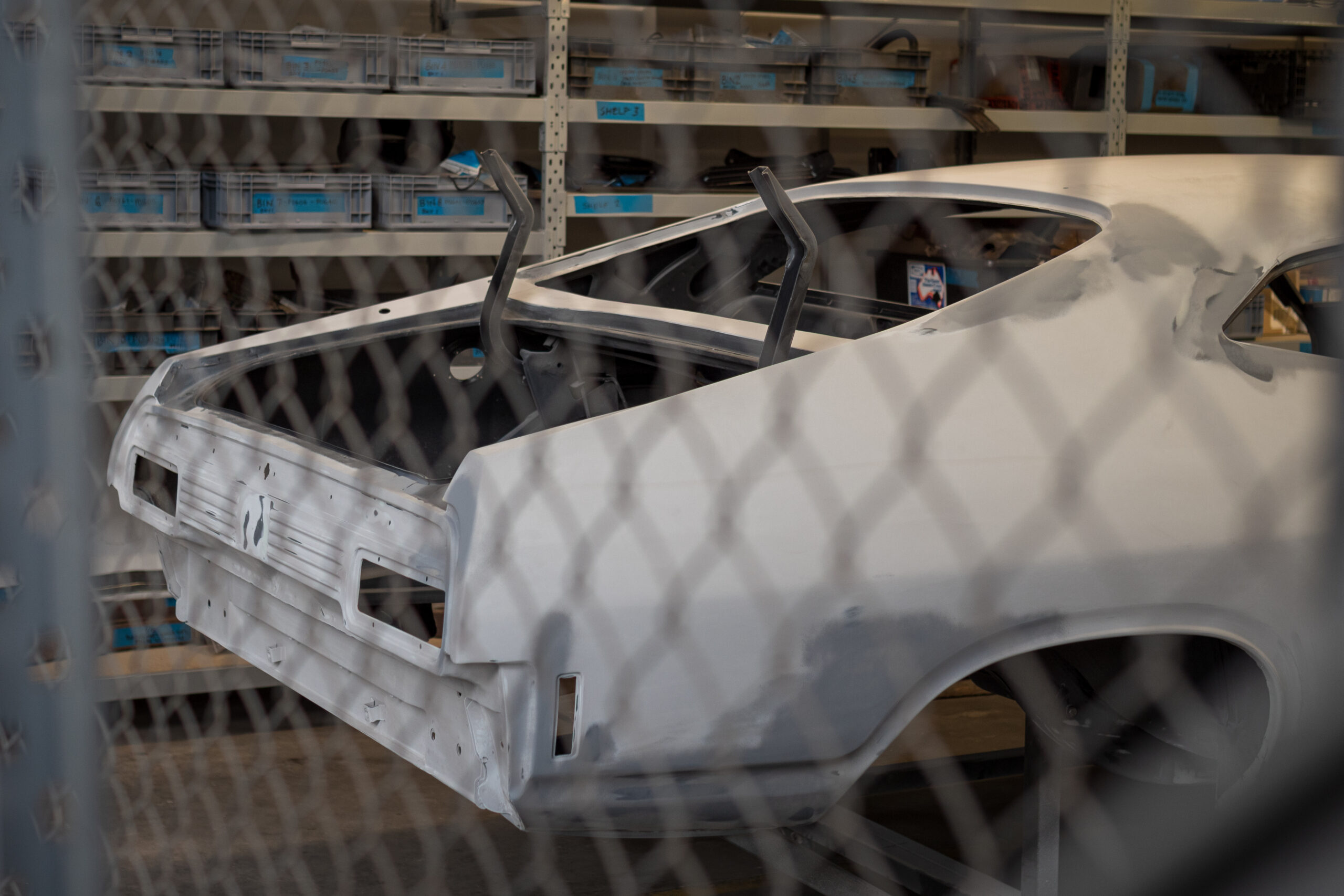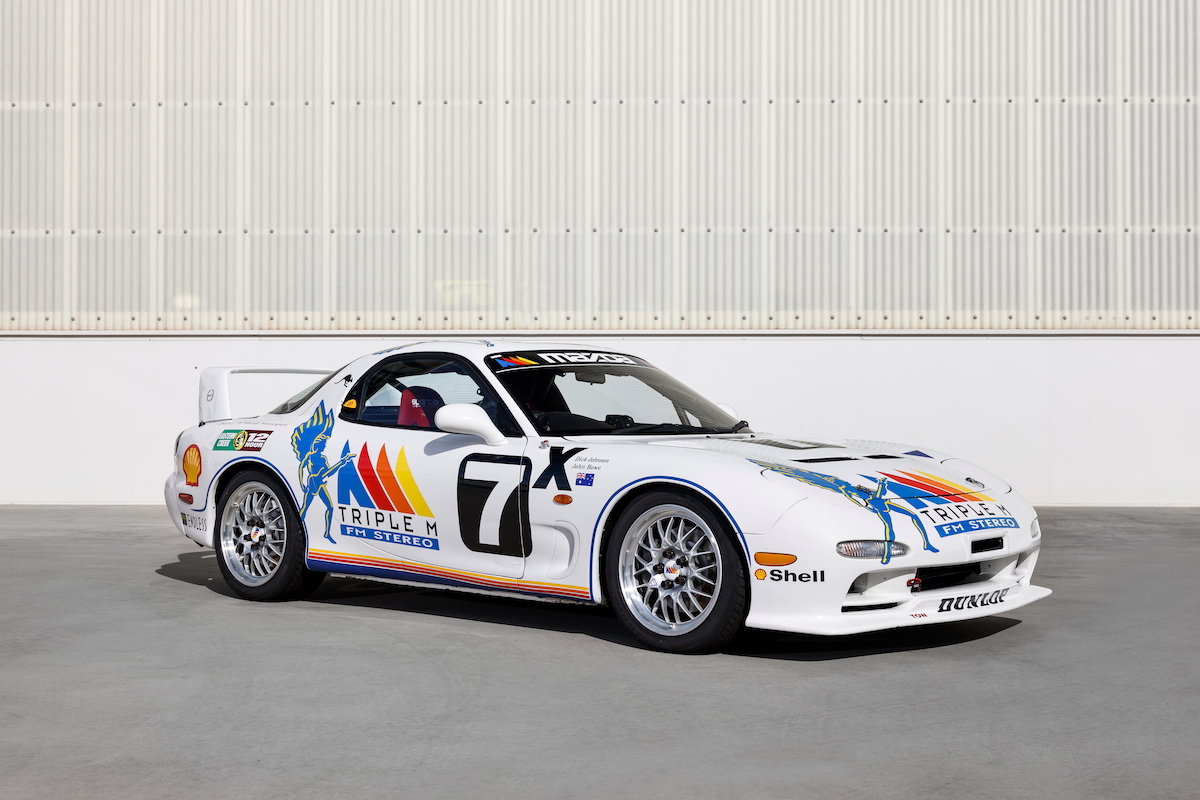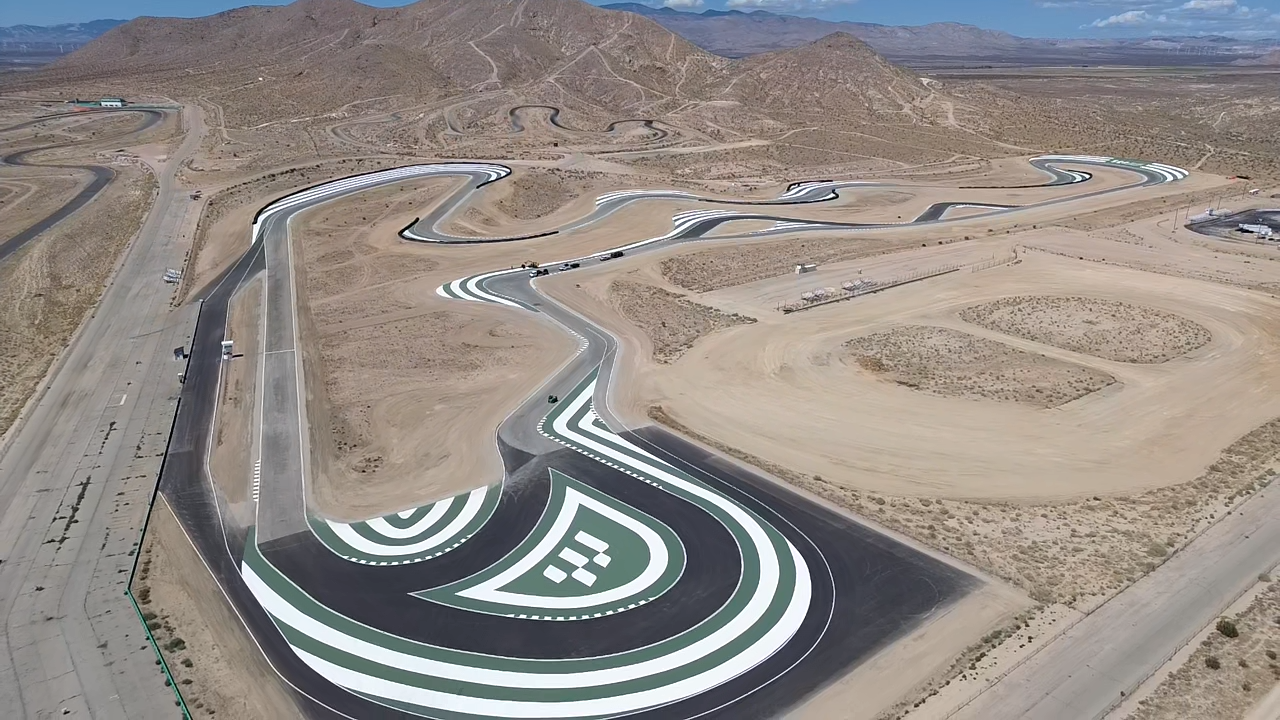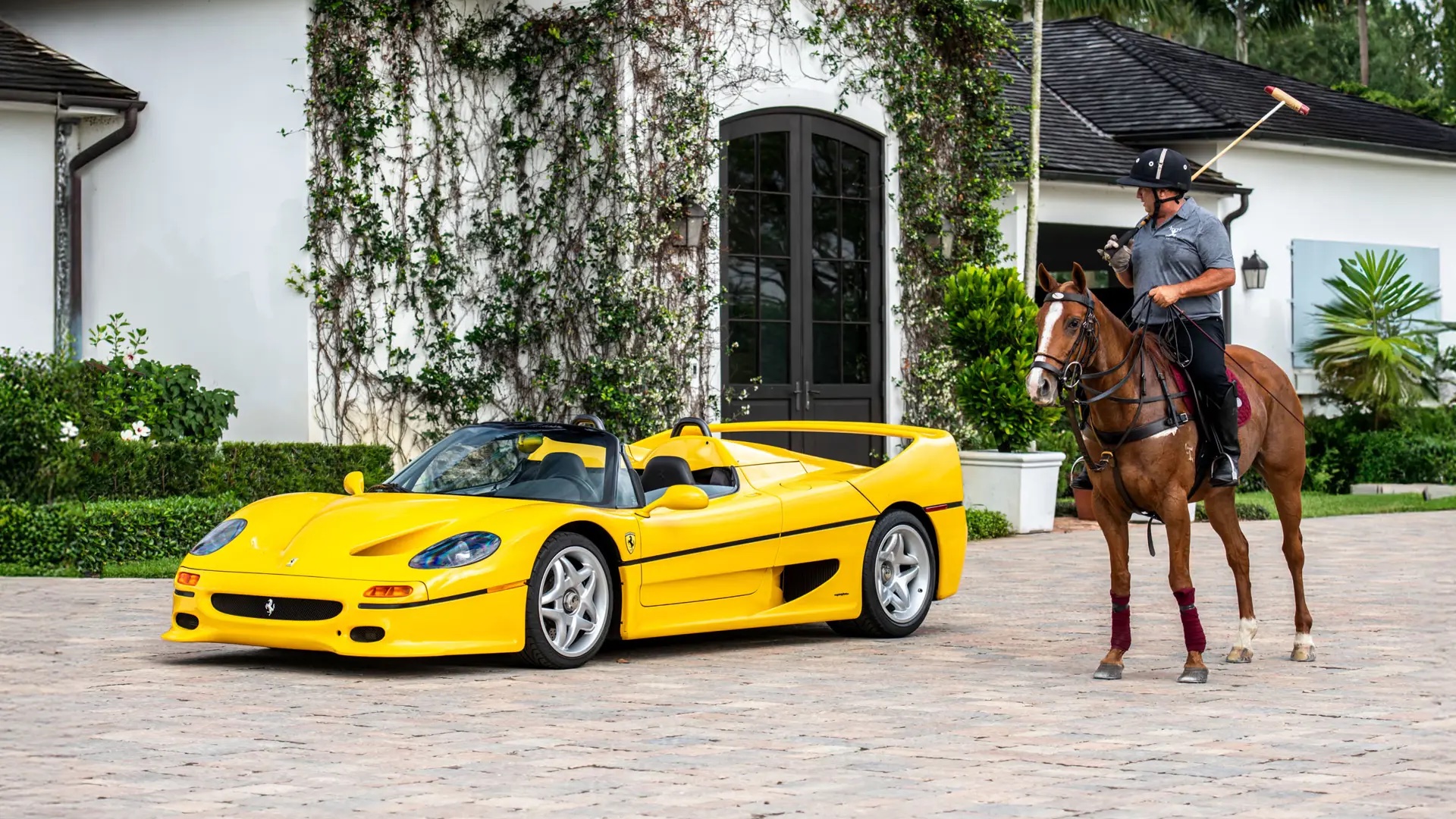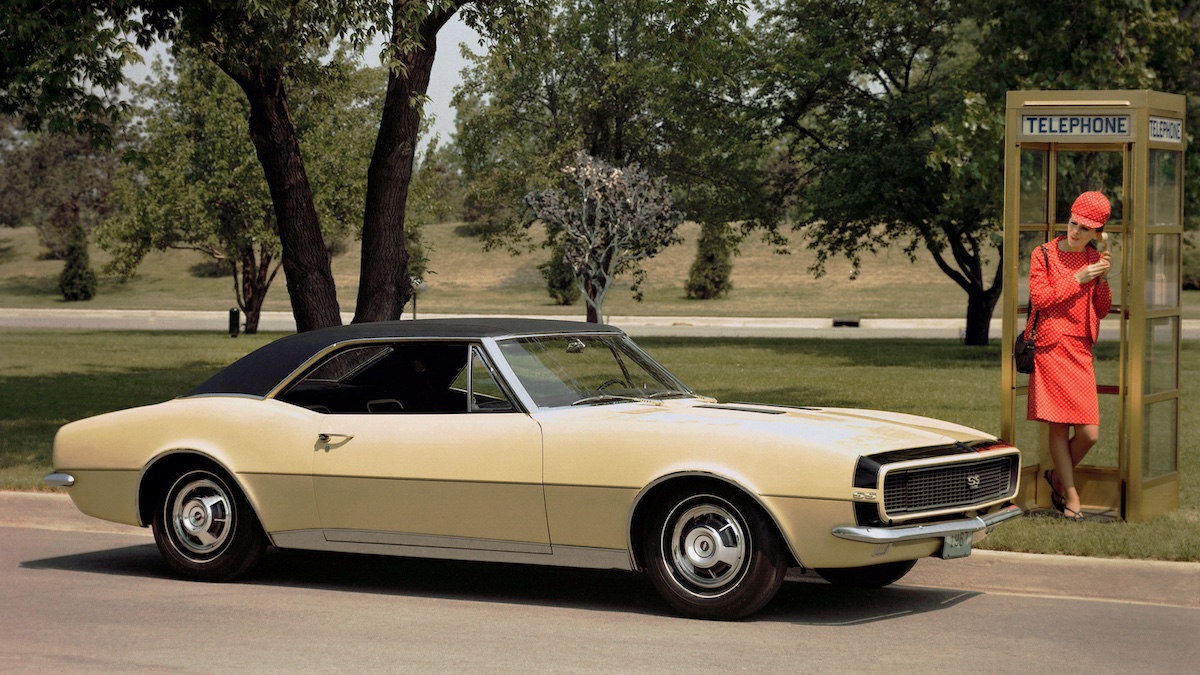While it may these days live in the shadow of Ford and GM as the smallest of the traditional US ‘Big Three’ auto makers, the impact Chrysler has had on the automotive world has been resounding.
This year marks the 100th anniversary of the brand that gave us the Airflow, Hemi V8, the ‘Letter Series’ cars including the extraordinary 300C, and some of the most extravagantly designed wonders of the tailfin era.
Here, we take a look back at Chrysler’s formation and the past century of its innovation.
1875-1912
Kansas-born Walter Chrysler, son of a locomotive engineer, is connected to the transportation industries throughout his life. His love of machinery prompts him to forsake a college education for a machinist’s apprenticeship, and his early career comprises numerous mechanical jobs in the railroad industry.
1912-1920
In 1912, Walter joins General Motors as manager of its Buick manufacturing plant, becoming president of the Buick division four years later. After parting ways with GM in 1919, he begins a second career as a “doctor of ailing automakers”, strengthening first Willys-Overland, then the Maxwell Motor Corporation.
1920-1924
Walter teams up with three ex-Studebaker engineers, Fred Zeder, Owen Skelton and Carl Breer, to design a revolutionary new car. They defined what the products of the Chrysler brand would be – affordable “luxury” vehicles known for innovative, top-flight engineering.
1924
Chrysler’s first car, the 1924 Chrysler Six is all-new and priced at US$1,565. It features two significant innovations – a light, powerful, high-compression six-cylinder engine and the first use of four-wheel hydraulic brakes in a moderately priced vehicle. The well-equipped Chrysler Six also features aluminium pistons, replaceable oil and air filters, full-pressure lubrication, tubular front axles, shock absorbers and indirect interior lighting.
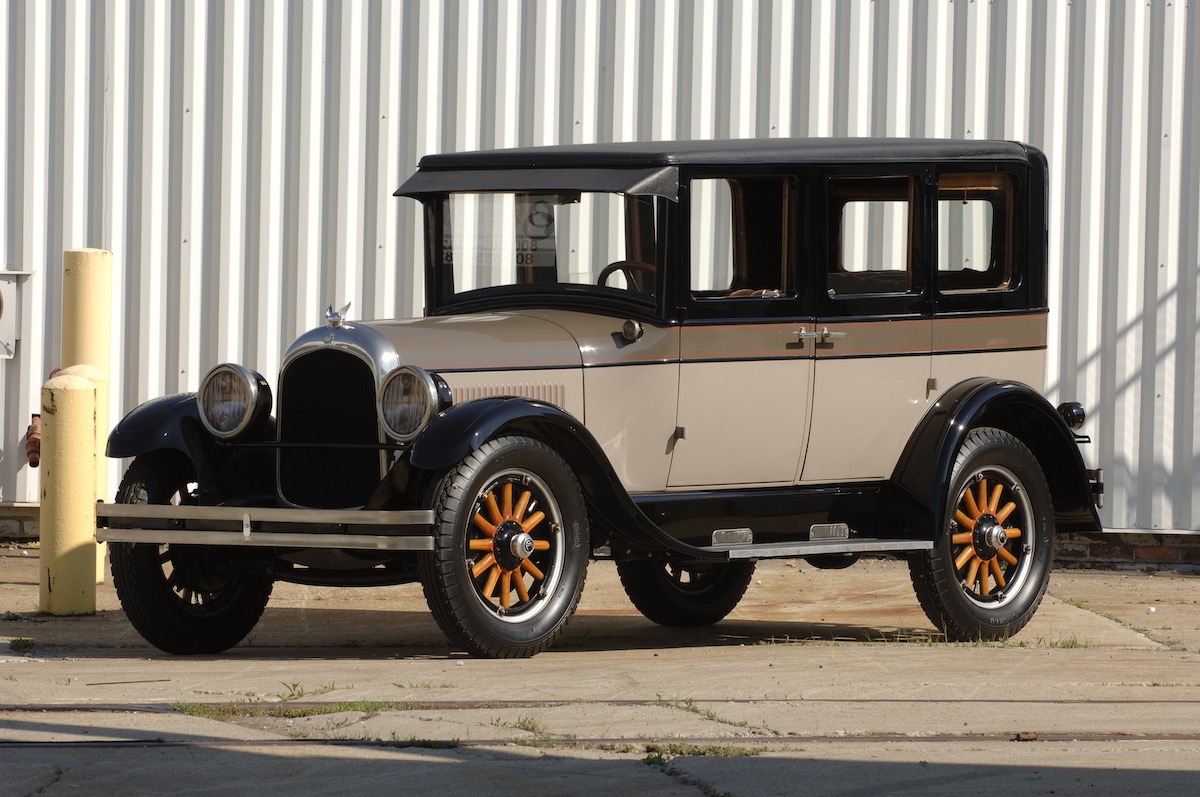
1925
After securing a $5,000,000 loan to start production, Chrysler sells over 32,000 units of the Chrysler Six in its first year. Soon after, the Maxwell company is renamed Chrysler Corporation. In 1925, the firm boasts more than 3,800 dealers and sells over 100,000 cars, ranking fifth in the industry.
1925-1930
Some of Chrysler’s early high-performance, high-style cars startle industry observers and customers alike, with mid-range pricing and added value helping assured the brand’s success. Model numbers tell customers how fast each Chrysler will go; the Chrysler 72, for example, features an optional “Red-Head” engine for better pickup and hill climbing.
Chryslers are soon performing commendably in period racing venues, winning the 1925 1,000-mile Stock Car Speed Trial at Los Angeles and placing second, third and sixth at the Belgian Twenty-Four-Hour Grand Prix of 1928. They also do well in endurance competition, completing a 1926 Kansas City-Denver test at an average speed of 51.8 mph and a 1927 New York-Los Angeles round-trip speed run at an average speed of 40.2 mph.
The 1928 acquisition of Dodge Brothers makes Chrysler the third of Detroit’s ‘Big Three’ automakers — and Walter Chrysler one of the most successful industrialists of his generation.
1930-1935
Within a decade of its founding, Chrysler Corporation’s leadership in innovation has earned it the label of Detroit’s “engineering company”. Chrysler’s list of early automotive “firsts” includes Floating Power (a new method of mounting engines to isolate vibration), replaceable oil filters, downdraft carburettors and one-piece curved windshields.
Chrysler then enters a higher level of competition with its richly-appointed Imperial series. With a custom-built body from LeBaron or Briggs, a 145-inch-wheelbase chassis, 125-horsepower engine and a price tag of $3,145, a typical Imperial of the early 1930s rivals a Duesenberg in style, but costs only about a third as much!
In 1934, Chrysler, with advice from Orville Wright, builds a wind tunnel to test body shapes that lead to the first unit-body, aerodynamic car — the Airflow. The idea comes from Carl Breer after he tests conventional car shapes in a wind tunnel and finds they register much less drag “tail first.”
The resulting Airflow “streamliner” is unlike any vehicle seen before, with its fluid design and pioneering unit-body construction offered improved handing and passenger comfort.
The Chrysler Airflow also features recessed headlights, a low step-up height, a standard in-line eight-cylinder engine, automatic overdrive and decent gas mileage of 21.4 miles per gallon. Unfortunately for Chrysler, the Airflow is deemed a bit too different by the American public and it’s not a sales success, even though its design is later widely copied.
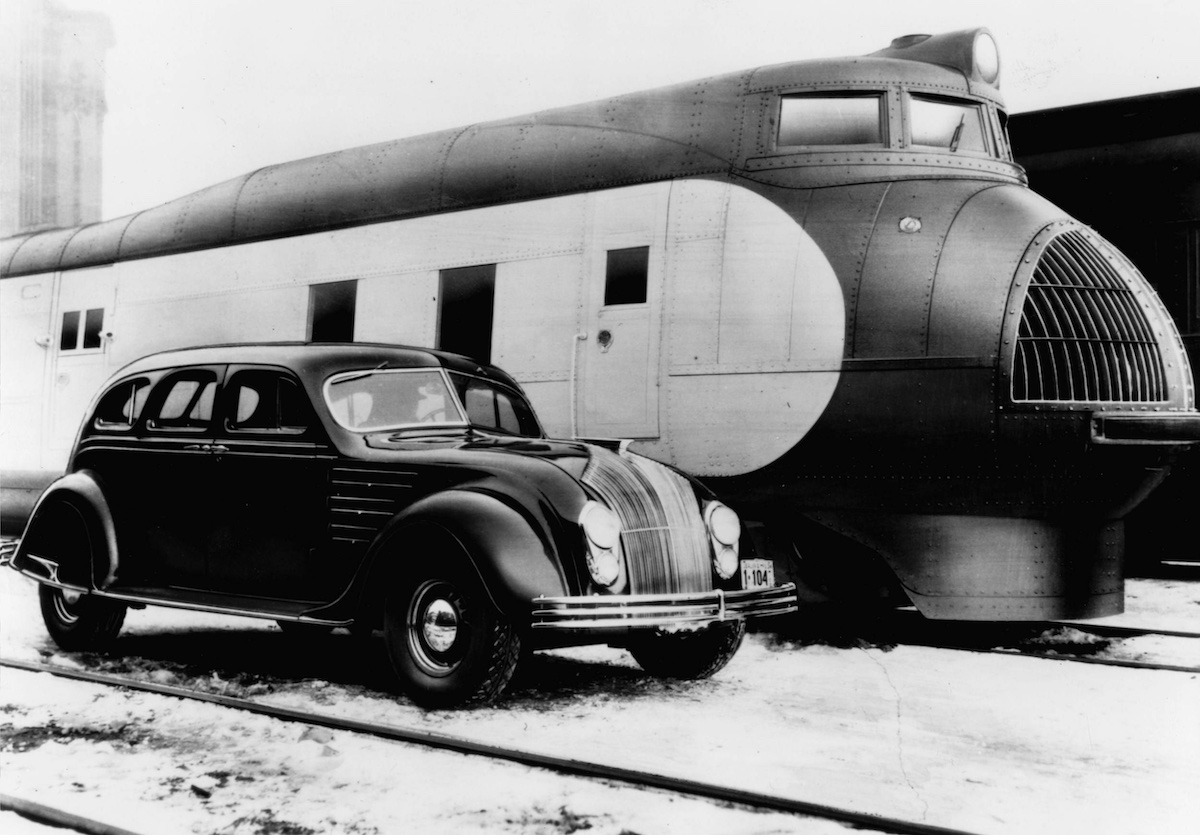
1936-1937
Slow sales lead to stronger promotion of more affordable cars like the $925 DeLuxe Eight over the slow-selling, $1,400 Airflow — and to more conservative Chrysler styling.
1938-1941
A new brand-defining model appears in the form of the New York Special, which is soon recast as the richly-appointed Chrysler New Yorker. Its longstanding popularity will eventually see it claim the title of America’s longest-running automobile nameplate (1938-1996).
‘Fluid Drive’, an “almost automatic” transmission that virtually eliminates shifting becomes another of Chrysler’s significant engineering innovations. Others include Superfinish to reduce wear on contacting metal surfaces and Oilite self-lubricating bearings.
In 1940, the stunning Chrysler Thunderbolt show car ensures all eyes are once again on Chrysler. The huge two-seater with retractable steel roof and streamlined cladding front to rear is an undeniable show stopper. Later that year Chrysler turns even more heads when its exotic Newport Phaeton, one of only five built by LeBaron, serves as pace car at the Indianapolis 500 Mile Race.
It’s during this period, too, that the most striking production-model Chrysler of the prewar years makes its debut, in the form of the 1941-42 Town & Country. This so-called “barrelback” sedan expands into an aerodynamic station wagon and comes trimmed with ash-and-mahogany side panels, marking the company’s elegant entry into the “woody” era.
1942-1945
All civilian car production stops for the duration of World War II. Chrysler is ranked eighth among all manufacturers in producing materials for the war effort.
1946-1954
When peacetime returns, Chrysler and other automakers rush back into production with new cars retaining many of the solid, reassuring features of the prewar models. The new 1946 Chrysler Town & Country sedans and convertibles feature the familiar ash-and-mahogany trim of the pre-war Town & Country station wagons.
The automotive styling tastes of Americans is changing rapidly, however, a trend not initially acknowledged by Chrysler which sticks steadfastly by its “high-and-wide” models while rivals move to longer, lower and more stylised models.
The first indication of changing times at Chrysler comes with the 1951 development, and enthusiastic reception, of the hemispheric-head V8 engine. The soon-to-be legendary HEMI combines better combustion, higher compression and lower heat loss to create much more horsepower than previous V8s. Close behind is the fully automatic Powerflite transmission.
Chrysler then reaffirms its reputation as an engineering-led company by commissioning a revolutionary gas turbine engine program. This 20-year campaign to apply an aircraft engine turbine’s smooth power and low maintenance requirements to automobiles becomes part of the brand’s folklore.
In 1949, Chrysler hires Studebaker designer Virgil Exner to head an advanced styling section, a first step toward realigning the company’s design priorities. Exner enlists the aid of Italian coachbuilder Carrozzeria Ghia to begin building a remarkable series of so-called “idea cars”, like the 1951 Chrysler K-310 five-passenger sport coupe, the 1952 C-200, which features the “gunsight” taillight design later used on Imperials, and the 1953 Chrysler D’Elegance, a three-passenger sport coupe with hand-sewn, black-and-yellow leather upholstery and matching luggage.
The most extraordinary car in this series is the Chrysler Norseman, featuring cantilevered arches to support a roof without “A” pillars, all-aluminium body panels and a power-operated, 12-square-foot panel of glass that slides forward to expose the rear seat to the sky. Shipped to America by Ghia, the Norseman sinks to the bottom of the Atlantic Ocean on the ill-fated Italian steamship Andrea Doria.

1955-1962
Exner revives Chrysler production car design with the sleek, sculptured Forward Look designs of 1955 that transforms the product line overnight. The Forward Look flagship is the 1955 Chrysler 300, a striking automobile that combines smooth styling with brawny HEMI power. The 300, arguably the first muscle car, becomes a legend on and off the race track and sets records throughout the 1950s, including a 143-mph performance at Daytona Beach.
As the Fifties progress, Chrysler products began to sprout distinctive tailfins, ostensibly to improve handling and stability above 70 miles per hour. The 1957 Chrysler brand standard-bearer, the 300C, is equipped with a standard 392-cubic-inch, 375-horsepower HEMI, two four-barrel carburettors, a high-output camshaft, Torsion-Aire suspension and the new Torqueflite transmission, making it the fastest, most powerful production car built in America that year and earning it the appellation “beautiful brute”.
Throughout the postwar years, Chrysler engineering leadership keeps pace with the new styling advances. Among the engineering “firsts” from the era are the “safety cushion dashboard”, the push-button transmission (which becomes an icon of the ’50s), power steering, torsion-bar suspension and the first practical alternator (introduced in 1960, it proves so successful it becomes standard equipment just one year later).

1963-1970
Chrysler enters the second phase of its gas turbine project, completing 50 smartly styled, Ghia-designed prototypes for testing by 200 customers. With its whooshing jet-aircraft sound, distinctive exterior and a space-age interior filled with a massive console, the Chrysler Turbine Car cannot be confused with any other vehicle. But the realities of its poor mileage (11.5 mpg) and high production costs bring the project to a quiet close.
Through the 1960s, Chrysler products evolve gracefully, with the fins slowly disappearing and the large cars becoming more refined. Advertisements for the 1963 New Yorker promise that there are “no junior editions to compromise your investment”. The 1963 Chrysler 300-J maintains the brand’s style-plus-speed image with standard leather interiors, heavy-duty torsion bars and Ram induction manifolds; a special-edition Pace Setter convertible version starts the Indianapolis 500.
By 1965, Chrysler sales have increased by 65 percent and the brand moves from 11th to ninth place in national rankings. Models range from the “affordable luxury” of the Newport line (with no fewer than 376 trim and colour combinations), through the high-line New Yorker to the sporty 300 with its 440-cubic-inch V8 engine.
1971-1979
Following a decade of success, Chrysler makes an ill-fated $450 million investment in new large cars just before the 1973 oil embargo. Public demand quickly turns from traditional large cars to mid-size and smaller vehicles, forcing Chrysler and its competitors to make extensive (and expensive) changes to their product lineups.
One notable design highlight in Chrysler’s rapidly evolving 1970s lineup is the Cordoba — a 115-inch-wheelbase coupe billed as “Chrysler’s new small car”. With its Jaguar-like front end, formal roofline and one-of-a-kind rectangular taillamps, it becomes one of the era’s most memorable cars. TV commercials featuring actor Ricardo Montalban extol the virtues of its “rich Corinthian leather” interior and Cordobas soon outsell all other Chrysler models combined, inspiring other new, “smaller” Chrysler designs, like the LeBaron Medallion coupe.
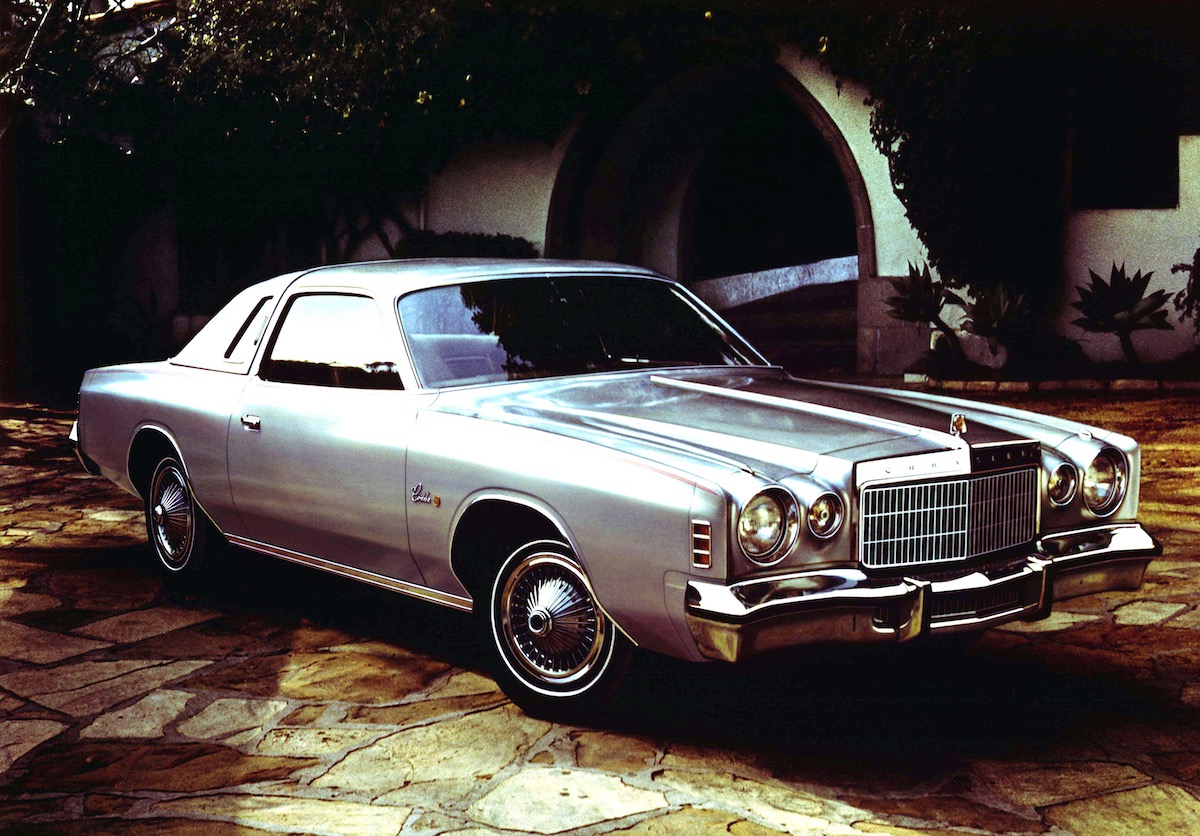
1980-1987
In 1980, Chrysler — deep in its greatest financial crisis — turns to the all-new K-Car for salvation. The pivotal automotive technology features a transverse engine, front-wheel drive, and independent suspension in lieu of Chrysler’s previous rear-wheel drive designs. Not everyone is a fan, with some referring to it as “the metal brick”, but the versatile new platform proves the right technology for the times, underpinning Chrysler sedans, coupes, convertibles and minivans.
Chrysler Corporation’s “back to basics” era peaks with the 1984 introduction of the minivan, the brand’s most practical vehicle to date, the popularity of which leads to the revival of the Chrysler Town & Country nameplate.
The design highlight for Chrysler during this period is unquestionably the LeBaron convertible, which reintroduces the style and excitement of convertible motoring to the American market and enjoys a nine-year production run.
1988-1998
In the late 1980s, new leadership at Chrysler is determined to return the brand to its roots of engineering and design excellence, by creating an entirely new line of “Euro-Japanese-ethic” cars. The new product philosophy is reflected in the development of concept cars like the 1988 Portofino and the 1989 Millenium.
The 1993 Concorde mid-size sedan marks the beginnings of Chrysler’s product renaissance in earnest, and is quickly followed by the full-size LHS and Chrysler 300M, the smaller Cirrus sedan, the companion Sebring luxury sports coupe and the separate Sebring convertible, as well as the next-generation Town & Country minivan.

1998-2007
Following the DaimlerChrysler merger in 1998, still more outstanding Chrysler vehicles are developed, including the new Chrysler 300C, the PT Cruiser and PT Cruiser convertible. Add to this the all-new Sebring sedan and Sebring convertible, the Pacifica crossover, the latest versions of the Town & Country minivan and the Crossfire sports car, and Chrysler’s showrooms are once again bursting with exciting new models.
2007-2021
Daimler sells its Chrysler stake to Cerberus Capital Management for $7.4 billion.
2021-2025
Chrysler joins Stellantis because of the merger between Fiat Chrysler Automobiles (FCA) and the PSA Group. Chrysler becomes part of the portfolio of 14 automotive brands operating under the Stellantis brand constellation.



